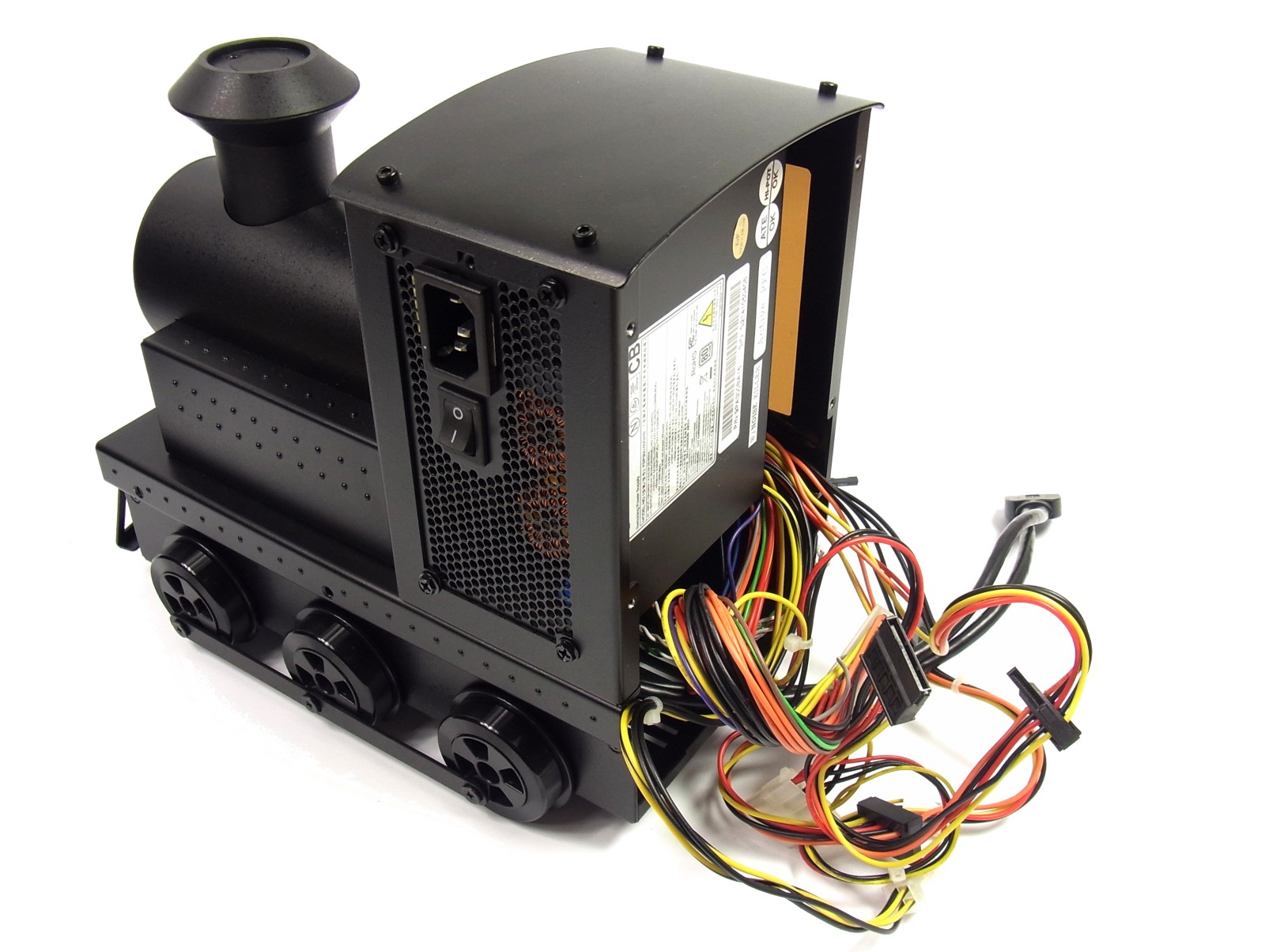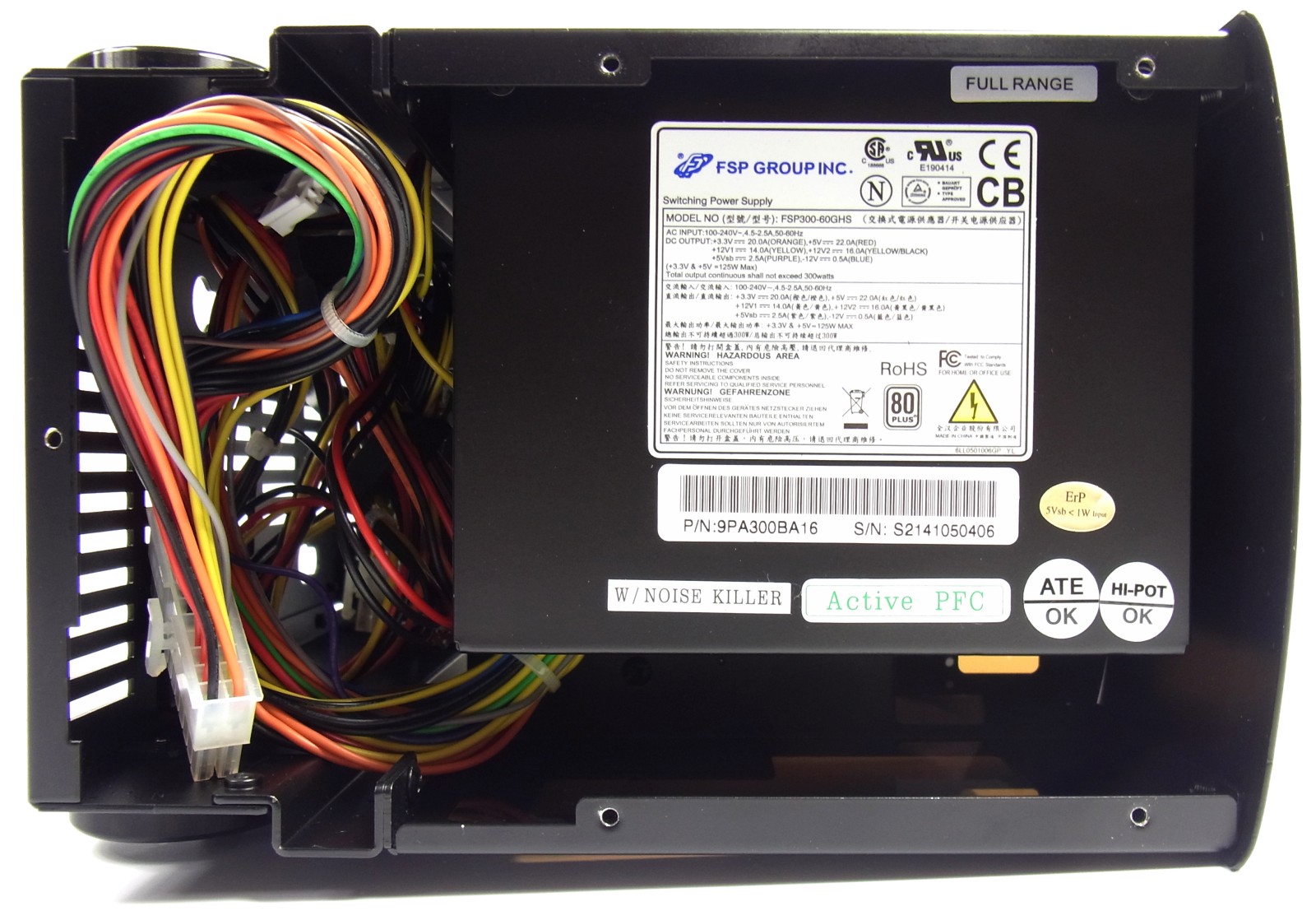Take The Train: Lian Li PC-CK101, Built, Tested, And...Driven?
Lian Li sent us a locomotive chassis that wraps around a PC; it's time for daddy to turn into a boy again. We'll show you how to get the right parts into this case and how to get it mobile. Then, we'll take it to a train museum full of steam-powered tech.
Power Supply And Wiring
Lian Li bundles a 300 W power supply manufactured by FSP, which arrives already mounted in the front section of the locomotive. FSP sells decent power supplies, but this unit's output rating is well in excess of what you'd need for a platform without room for an add-in graphics card. Why didn't Lian Li just use a PicoPSU and an external power adapter? If only to make a point about power use, one of my configurations employed a Core i7-3770K on a Z77-based motherboard. Such a setup would have stretched the capabilities of a PicoPSU, but we don't think it's particularly realistic to put such high-end hardware into a whimsical little case like this anyway.
So long as you use the right motherboard, FSP's power supply complies with ErP/EuP requirements. Stand-by power was measured at a mere 0.5 W, which is exemplary. The PSU passed several short circuit and overload experiments, and its sound level is also admirably low, even under full load. The power supply fan is temperature-controlled, which we think deserves recognition.
| Model | FSP300-60GHS |
|---|---|
| Input Spec | 100-240 V (Full Range)4.5-2.5 A50-60 Hz |
| Output Spec | 3.3 V + 5 V = max. 125 W12 V1 + 12 V2 = max. 264 W (22 A)Total power draw on all rails, maximum 300 W |
| Connections | 24-pin Mainboard Connector4-pin CPU Connector 12 V1 x PATA (Four Molex Connectors, 1 x Floppy Connector)2 x SATA (Two SATA Connectors) |
Although the cables aren't sleeved, I consider that to be in advantage in a cramped chassis like Lian Li's locomotive. Rigid leads would be more difficult to route. Thus, there's really no reason to replace the factory-installed power supply. Its output power proved sufficient, and all of our testing with it was successful.
Get Tom's Hardware's best news and in-depth reviews, straight to your inbox.
Current page: Power Supply And Wiring
Prev Page Packaging And Contents Next Page You'll Never Guess Where They Put The Optical Drive
Igor Wallossek wrote a wide variety of hardware articles for Tom's Hardware, with a strong focus on technical analysis and in-depth reviews. His contributions have spanned a broad spectrum of PC components, including GPUs, CPUs, workstations, and PC builds. His insightful articles provide readers with detailed knowledge to make informed decisions in the ever-evolving tech landscape
-
bit_user Not the first time I've seen it, but I still think this case is just an exercise in sheer ridiculousness.Reply
But since the PC era is coming to an end, who can blame Lian Li for having a little fun while they still can?
-
edogawa This thing is so awesome...if it wasn't for the noise I would get one...I love trains...Reply -
bambiboom Just brilliant. Finally, a computer case with a bit of style suitable for grownups.Reply
Taking the mobile computing theme further, and addressing the limitations on computing power, if you had a Dell Precision M6600 or 6700 laptop with a broken screen, how about mounting the components, motherboard , PSU, batteries, drives, Wifi and all? Then, there could be an i7 CPU and a Quadro 4000M, all very quiet and still getting more air than it's used to. And, appropriately, no power cord!
The idea of a serious, self- propelled workstation steam train model seems the best use possible of this fantastic enclosure idea. That the computer is itself the game is on the borderline of being art.
And congratulations to Igor Wallossek for an excellent description of something so wonderfully out of the ordinary. -
shikamaru31789 I remember when I first saw this on Newegg. I thought I'd lost my mind for a moment. It's definitely a unique case.Reply -
ojas Tom's Hardware's German team has a lot of fun, i can see :DReply
Really enjoyable read, Igor! Also got to know about that Gigabyte wireless streamer, should prove useful!
Nice house btw :)

